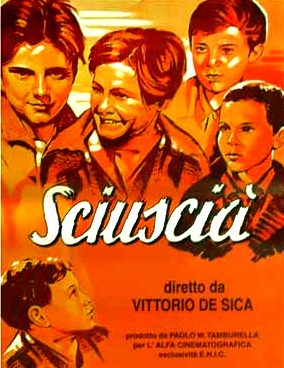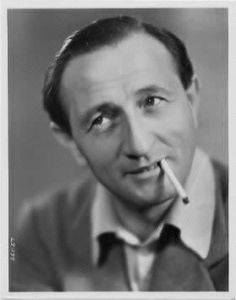
The Venice Film Festival or Venice International Film Festival is an annual film festival held in Venice, Italy. It is the world's oldest film festival and one of the "Big Five" International film festivals worldwide, which include the Big Three European Film Festivals, alongside the Toronto Film Festival in Canada and the Sundance Film Festival in the United States.These festivals are internationally renowned for giving creators the artistic freedom to express themselves through film. In 1951, FIAPF formally accredited the festival.

Roberto Gastone Zeffiro Rossellini was an Italian film director, screenwriter and producer. He was one of the most prominent directors of the Italian neorealist cinema, contributing to the movement with films such as Rome, Open City (1945), Paisan (1946), and Germany, Year Zero (1948). He is also known for his films starring Ingrid Bergman, Stromboli (1950), Europe '51 (1952), Journey to Italy (1954), Fear (1954) and Joan of Arc at the Stake (1954).

Cesare Zavattini was an Italian screenwriter and one of the first theorists and proponents of the Neorealist movement in Italian cinema.

Italian neorealism, also known as the Golden Age, was a national film movement characterized by stories set amongst the poor and the working class. They are filmed on location, frequently with non-professional actors. They primarily address the difficult economic and moral conditions of post-World War II Italy, representing changes in the Italian psyche and conditions of everyday life, including poverty, oppression, injustice and desperation.

Talia Rose Shire is an American actress, best known for her roles as Connie Corleone in The Godfather trilogy and Adrianna Pennino Balboa in the Rocky series. For her work in The Godfather Part II and Rocky, Shire was nominated for Academy Awards for Best Supporting Actress and Best Actress, respectively, and for the Golden Globe Award for Best Actress in a Drama for her role in Rocky.

Silvana Mangano was an Italian film actress. She was one of a generation of thespians who arose from the neorealist movement, and went on to become a major female star, regarded as a sex symbol for the 1950s and '60s. She won the David di Donatello for Best Actress three times – for The Verona Trial (1963), The Witches (1967), and The Scientific Cardplayer (1973) – and the Nastro d'Argento for Best Actress twice.

Robert Alda was an Italian-American theatrical and film actor, a singer, and a dancer. He was the father of actors Alan and Antony Alda. Alda was featured in a number of Broadway productions, then moved to Italy during the early 1960s. He appeared in many European films over the next two decades, occasionally returning to the U.S. for film appearances such as The Girl Who Knew Too Much (1969).

Rome, Open City, also released as Open City, is a 1945 Italian neorealist war drama film directed by Roberto Rossellini and co-written by Sergio Amidei, Celeste Negarville and Federico Fellini. Set in Rome in 1944, the film follows a diverse group of characters coping under the Nazi occupation, and centers on a Resistance fighter trying to escape the city with the help of a Catholic priest. The title refers to the status of Rome as an open city following its declaration as such on 14 August 1943. The film is the first in Rosselini's "Neorealist Trilogy", followed by Paisan (1946) and Germany, Year Zero (1948).

Giuseppe De Santis was an Italian film director. One of the most idealistic neorealist filmmakers of the 1940s and 1950s, he wrote and directed films punctuated by ardent cries for social reform.

The Locarno Film Festival is a major international film festival, held annually in Locarno, Switzerland. Founded in 1946, the festival screens films in various competitive and non-competitive sections, including feature-length narrative, documentary, short, avant-garde, and retrospective programs. The Piazza Grande section is held in an open-air venue that seats 8,000 spectators.

Shoeshine is a 1946 Italian film directed by Vittorio De Sica. Sometimes regarded as his first masterpiece, the film follows two shoeshine boys who get into trouble with the police after trying to find the money to buy a horse.

Pietro Germi was an Italian film director, screenwriter, and actor, noted for his development of the neorealist and commedia all'italiana genres.
A list of some notable films produced in the Cinema of Italy ordered by year and decade of release For an alphabetical list of articles on Italian films see Category:Italian films.
The 12th New York Film Critics Circle Awards, announced on 9 January 1947, honored the best filmmaking of 1946.

Paisan is a 1946 Italian neorealist war drama film directed by Roberto Rossellini. In six independent episodes, it tells of the Liberation of Italy by the Allied forces during the late stage of World War II. The film premiered at the Venice International Film Festival and received numerous national and international prizes.

The Nastro d'Argento, is an Italian film award, held since 1946 by the Sindacato Nazionale Giornalisti Cinematografici Italiani. Awards are given annually in a wide range of categories, covering not only feature films, but also short films and television series. The main awards are given at Taormina Film Fest, Sicily, while the short film awards ceremony is held in Naples.

Carmine Gallone was an early Italian film director, screenwriter, and film producer, who was also controversial for his works of pro-Fascist propaganda and historical revisionism. Considered one of Italian cinema's leading early directors, he directed over 120 films in his fifty-year career between 1913 and 1963.
Giorgio Ferroni was an Italian film director.

The Black Eagle is a 1946 Italian historical adventure drama film directed by Riccardo Freda and starring Rossano Brazzi, Irasema Dilián and Gino Cervi. It was released as Return of the Black Eagle in the United States. The film is based on the unfinished 1832 Russian novel Dubrovsky by Alexander Pushkin (1799–1837). It was followed by a 1951 sequel Revenge of the Black Eagle, also directed by Freda.

Hollywood on the Tiber is a phrase used to describe the period in the 1950s and 1960s when the Italian capital of Rome emerged as a major location for international filmmaking attracting many foreign productions to the Cinecittà studios. By contrast to the native Italian film industry, these movies were made in English for global release. Although the market for many of these films was primarily American, they enjoyed widespread popularity in other countries, including Italy.

















